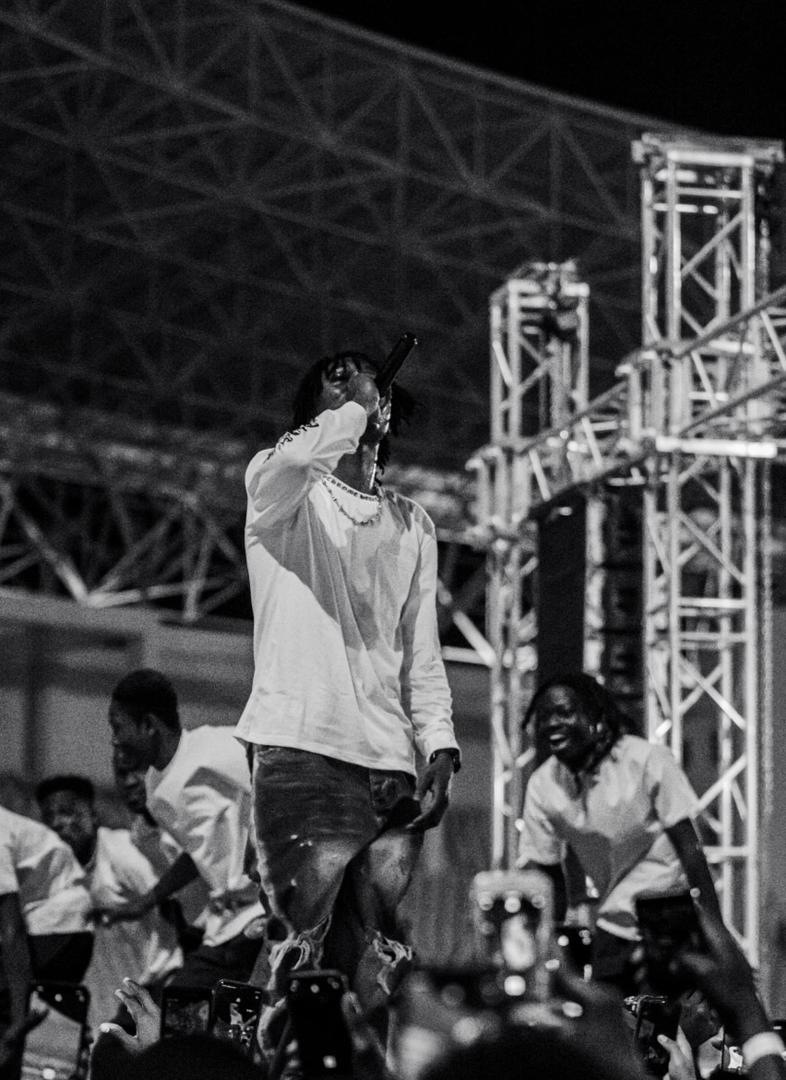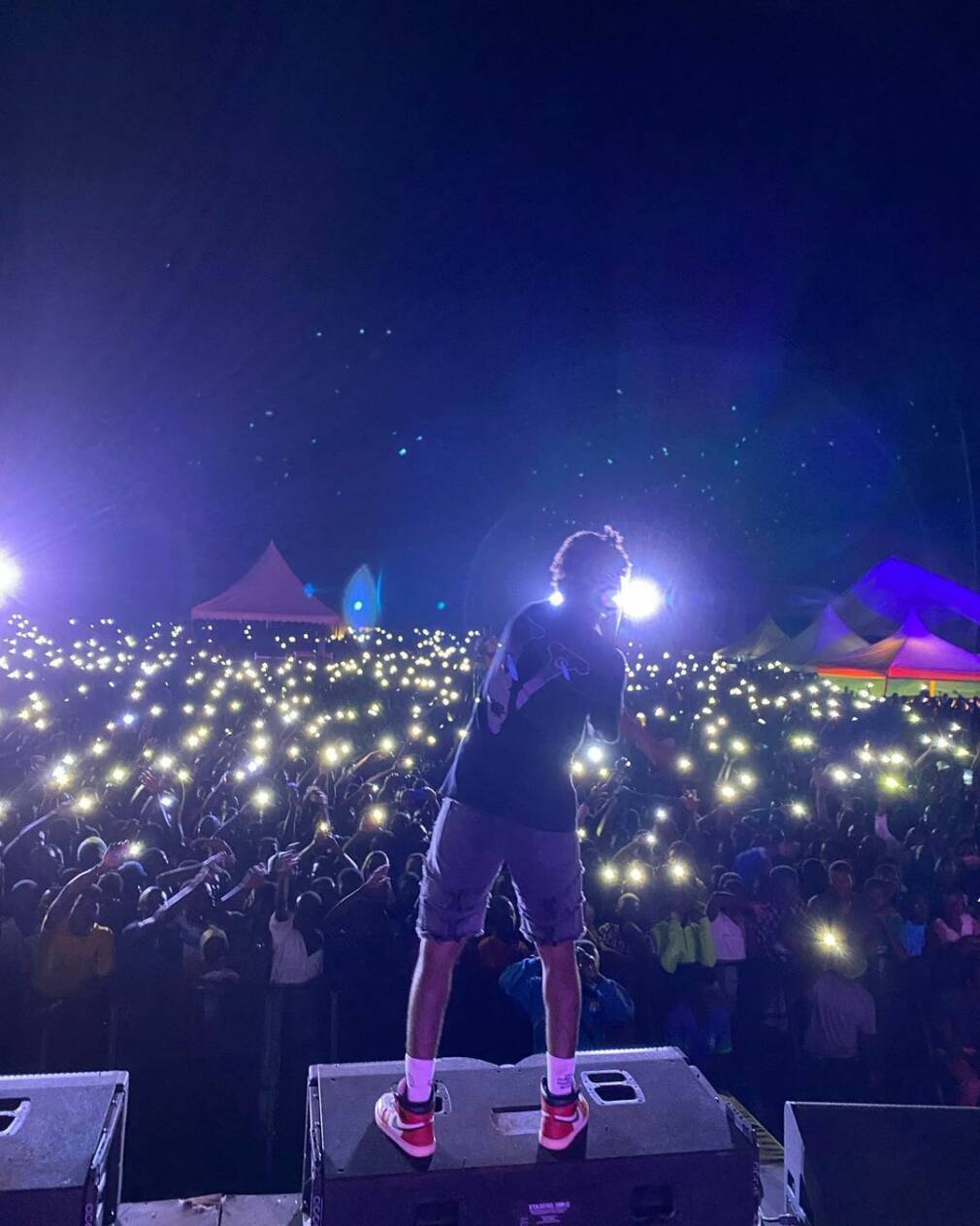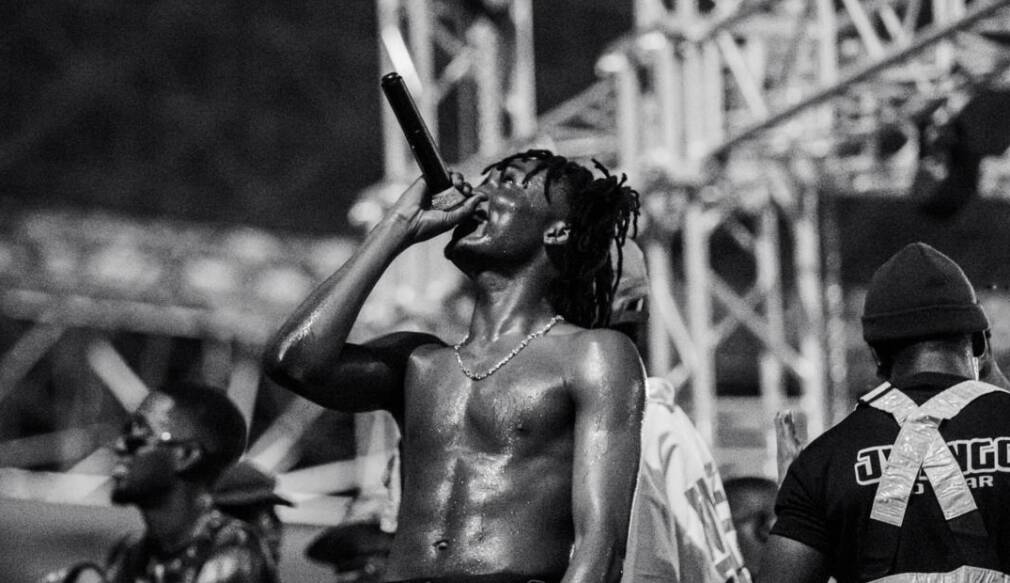In Ghana, music in the Northern region is going through a transformation with the introduction of a new wave of artists. This new phenomenon has revealed the existence of budding new acts originating from the hinterlands of Tamale and Bolgatanga. The music is filled with youthful inspiration, authentic northern flows, and an aesthetic you can only find in the North of Ghana. It is deeply rooted in both hip hop and traditional culture. This new wave is shaking up social media and creating a new narrative with an urban approach to music in the North, focused on stimulating a new identity for their youth. PAM investigates the phenomenon.
Tamale, located in Ghana’s Northern Region, has deep roots in local traditions, especially those of Dagomba culture and griot storytelling. Traditional music often featured instruments like the lunga drums, gombe, and kologo, with themes centered on folklore, spirituality, and social engagement. A unique and localized music culture thrived in Tamale, driven by community celebrations, traditional festivals, and a strong sense of cultural pride. The Tamale music industry began to flourish in the late 1980s when electricity arrived, making recording technology more accessible. Early artists, trained in local bands, were inspired by the sounds from Southern Ghana but created distinct styles.
As Tamale modernized, musicians began blending traditional sounds with contemporary genres. Influences from hip-hop, reggae, and hiplife, a Ghanaian genre merging highlife with hip-hop, started to reshape the local music scene. This fusion created a fresh style appealing to Tamale’s youth, mixing local dialects and culture with urban beats. In the early 2000’s, artists like Sheriff Ghale and King Ayisoba from Bolga who make more traditional music became known across the country for addressing spiritual and social issues, serving as important voices within their communities within that period. Key figures like Fancy Gadam, Sherifa Gunu, and the duo KKC also contributed to the vibrant landscape of Tamale music. Their unique storytelling and blending of traditional sounds with modern beats made Northern music a vital part of Ghana’s music identity.
By the 2010s, Tamales music began gaining national recognition again. Artists like Fancy Gadam and Maccasio successfully mixed Afrobeat and dancehall with traditional northern styles. Fancy Gadam’s 2017 hit “Total Cheat”, featuring Sarkodie, showcased that northern sounds could resonate with a wider audience. This period also marked a rise in national awards for Tamale musicians, highlighting the appreciation for their unique contributions to the Ghanaian music scene, but also created a sort of monopoly between Maccasio and Fancy Gadam which would last for about a decade of both artists pushing hard for the top spot.
Change for the people in Tamale came through Covid. During this period of confinement, a new generation of urban youth went into the lab to produce the next wave of sound to shake the North. We spoke to two of the forerunners of this wave, namely RICCH KID and Fad Lan. They both expressed their excitement about the surge of energy in their music space and made assurances that there’s much more to come.
“My mother and father loved music, so growing up they had a lot of cassettes…Bob Marley, Michael Jackson, Lagbaja, K1 DE Ultimate, Youssou N’Dour and the rest so I was hooked to music since then.” Fad Lan remembers his early years with his parents. Fad Lan states that growing up, hiplife was what everyone had started doing. “It used to be highlife or traditional music then there was a new crop of artists with an American lifestyle, some had dreadlocks, Big Malik and Big Adams, S.K.Y. THE Tamale boy and others. They were all together and collaborated together. It was just rap and they made the youth in Tamale fall in love with rap at that time but everything was kind of underground.”
Today, this new guard’s proto-form of hiplife, with their raw, unapologetic lyrics and heavy, synthesized beats are captivating audiences and filling up stadiums in the region. At the core of their music is the language, Dagbani, which is unmistakable and which comes with the distinct Northern accent different from all other music in Ghana. Together, they fuse many genres, but the dominant influence is trap and drill. RICCH KID when asked about what inspired him to take this path, he explained, “the streets and my experiences in my community. We have a lot of smart guys here, a lot of art, but there isn’t much support. I had to take this seriously and be consistent with it so they had no choice but to pay attention. I also took inspiration from artists like G Herbo, Houdini, and mostly Future and Metro Boomin. They inspired me through my journey.”
The journey so far has been difficult for these young talents but they’ve done an impressive job of forging a new path for themselves. Fad Lan describes the music scene presently…. “Music in Tamale right now is the best thing. Everybody is popping now, everyone can now do the style they want. It used to be one way, you needed to be very traditional or sing in only your local dialect before they vibe to you. Things have changed now. In the past, if I wanted to listen to trap, I’d just go listen to Lil Baby or Gunna because they’re my favorite artists but right now I have favorite trap artists in Tamale too.”
Progress has come with a lot of push back, especially from the older generation who, according to RICCH KID, didn’t understand the power and meaning behind this new scene. “They didn’t see the value of what we were doing. It’s like how they saw the whole movement, they didn’t really see how it would become something that would put the North on the map. It didn’t even come from a jealousy standpoint but I think because nobody has really done what we’re doing now.”

Today, the Tamale music scene is thriving, with platforms like YouTube, Instagram, and TikTok enabling artists to reach global audiences. Musicians are gaining recognition blending Tamale’s style with other West African sounds. New artists are constantly experimenting, integrating hip-hop, Afrobeat, and electronic dance music with traditional elements while remaining true to their roots. Hit records like ”Firdaus” by RICCH KID which directly speaks on his personality which can largely be related to the personalities of most people in his community. Talking about betrayal but always showing love regardless. His style may be more foreign with a lot of trap influence but the language and unique blend are unmistakable. Also the more recent “Misa Misa” by Fad Lan are just a few examples of the diversity of these talented bunch. “Misa Misa” for instance embodies Northern culture in a way that’s rare. The Imams, opinion leaders, both the young and old related so it was an instant hit. The likes of Soorebia have also managed to blend the traditional two string guitar or kologo and the contemporary hip-hop then there’s the likes of another artist like DaniSadiq who has that Dagbani attitude with a style and flow that’s very drill and foreign inspired but you are able to immediately recognize him from his energy and how he embodies himself as a Dagomba man. The monopoly Maccassio and Fancy Gadam for the better part of a decade has been liquidated. Everybody can have a piece of the cake now. This has always been the plan for the guys…”our motive was to inspire young people to come out, if they see us doing it, they can do it too.”
Through all this, the influence of the internet is undeniable… RICCH KID explains further, “The internet was my helper. We weren’t the industry favorite, or media favorites…especially with my laid back personality, the internet has really helped me put myself out there.” According to Fad Lan, in the North streaming became more of a thing after Covid and pushed the crest of this new wave…“before that a lot of the artists, even as of 2019, just shared their music through WhatsApp and downloads”, there was no proper way to track and monetize. He continues, “I was the first to clock 1 million streams on Audiomack in the North. It has now become a yardstick for everybody that drops a project to upload onto all streaming platforms.”

Generating so much excitement is bound to attract critics, in this case mostly from the older generation but they’ve come this far, and aren’t slowing down. They seem to be touching the surface at this point, and the only thing that can become an obstacle would be themselves. Collaborating on hit records like “Okay” by Fad Lan featuring RICCH KID and Gingsen is proof that the message is louder when they come together. Touching on what lies in the near future, RICCH KID highlighted his three already released albums, Time Don’t Lie. How I’m Built and Can’t Be Saved as the beginning of a lot more to come from him and the North in general…“stuff like organizing stadium concerts were because my fans were requesting for it so my team and I made it work but were correcting our mistakes and building a better team so that we can reach a larger market, involving professional promoters, were also on a look out for a deal that can fund a lot of what we’re doing. Hard work and being consistent with my craft has brought me this far. I know my music will go far, so long as I stick to it. We’ve brought it this far but even if I’m not the one to make this global I think we’ve opened it up for the other guys to do that. African music needs a lot more global superstars with different styles, in my opinion we don’t have enough now.”
Fad Lan also added,“I think the whole world would like to connect or collaborate with Northerners. What I’m seeing now is younger artists doing a lot of experimentation and trying to find their sound. What they’re doing now is getting people hooked to what they’re doing so in about five years when it all aligns, people will connect with that sound. The Northern tone itself is sweet because our tonation is high pitched so I kind of feel just like how afrobeats evolved, the evolution of our sound too will break boundaries in the next five years.”
